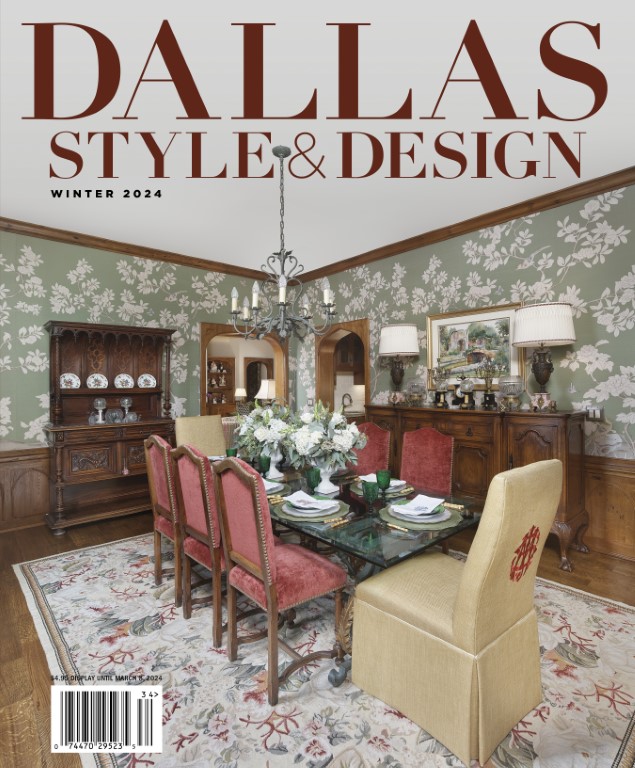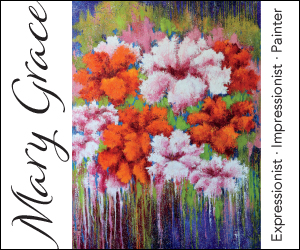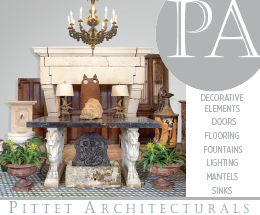David Gappa Signature Fine Art Glass takes its craft to new heights with the addition of 3-D printing.

David Gappa has come as close to perfecting the art of glassmaking as one can after honing his craft for more than two decades. In that time, he’s grown his after-hours hobby into a robust business run from a bustling studio in Grapevine, Texas.

David Gappa Signature Fine Art Glass—or Gappa Glass for short—has made a name for itself with jaw-dropping installations for homes and businesses. One such piece is a 50-by-60-foot ceiling fixture for the Center for Brain Health that is meant to mimic the brain’s neurons and the illuminated network that connects them.
The Main Street workshop that Gappa and his staff work from in Grapevine, known as Vetro Glassblowing Studio and Gallery, is equally impressive and strikingly popular. It plays host to corporate team-building events for Nokia and American Airlines and one-on-one glassmaking lessons for eager students.

Gappa reports that thousands of customers booked appointments over the holiday months just to get a taste of the glassmaking action with a design-your-own-ornament event. In years past, hundreds would line up for similar events, but this past year Gappa implemented online scheduling to be in compliance with CDC guidelines.
When you’re on top of your game, where do you go from there? Well, you push the boundaries of glassmaking, of course. Gappa Glass is taking things to a new level with the recent addition of 3-D printing. “Now I can create pieces exactly as I envisioned them,” Gappa says emphatically. “I design the glass the way I want it, and the hardware becomes secondary to the composition.”
With 3-D printing, his studio is no longer limited by what hardware or connective elements they are able to source—or worse, having to get these pieces custom fabricated, which costs thousands of dollars and a lot of time going back and forth with the artisan and manufacturer.

“When I was working on a chandelier for a client, I spent countless hours looking for a certain size nylon connector that would fit the steel hardware—but never found it,” Gappa says. “I spent all that time and still ended up having to recalibrate the glass to fit the hardware. This happened every time I secured a project, whether it was a chandelier or wall installation. The most time and expense was finding component pieces or hardware already prefabbed or hiring a metal shop to fabricate the pieces.”
One of the first projects Gappa Glass used to test out 3-D printing was a commission piece for a client in Florida. They requested a re-creation of a coral reef complete with a spiny sea urchin. Gappa’s team created the body of the sea urchin using the 3-D printer. “The shell of the urchin is a semicircle that has a series of voids to accept hand-sculpted glass spines,” he explains.
 d
d
This project gave him a taste of the possibilities of 3-D printing, then all systems were go.
“Now we’re aggressively pursuing 3-D printing for our component parts, connectors and structural support for our chandeliers and wall installations,” Gappa says. “Literally, as we speak, we’re printing out component parts and assembling pieces. It’s fun to play around with this; we’re learning something new every day.”
Gappa hired a shop foreman from Finland, Jorma Rahja, to oversee his team of two full-time glassblowers and a few more seasonal glassblowers. Rahja taught 3-D modeling in Europe and has been an invaluable addition to the studio.
“It’s been seamless for us. I’ll draw up a concept sketch, and he is able to make those visions happen,” Gappa says. “It’s super exciting to have a core staff that can seamlessly move into the next generation of design.”
Additionally, Gappa’s own background as an architect has come in handy while exploring this new frontier. “Through my 10 years as an architect, I came to understand the mechanics of structural loads, sheer forces and cantilever loads, and learned what does or doesn’t work in the real world,” he says. “I’ve been blessed by having that background knowledge. It shaves off countless hours.”
Now his team is exploring printing with different filament types, like transparent or opaque, and how the glass interacts with each medium. “We’re having a good time navigating through this,” he says.
Gappa is thrilled to bring to fruition a new series inspired by icicles. He will, of course, use his 3-D printer to create the connectors that house each icicle.
“The design will be highly customizable for clients to configure in a number of different ways on walls or ceilings. It seems like the sky’s the limit in terms of what can be accomplished with this new tool. Our 3-D printer has opened up doors creatively and afforded flexibility on our part,” Gappa says. “Now I can design concepts exactly the way I want.” *
Alaena Hostetter is a content strategist, editor and journalist who writes about art, design, culture, music, entertainment and food. She can be reached via her website alaenahostetter.com.
David Gappa Signature Fine Art Glass
Vetro Glassblowing Studio & Fine Art Gallery
701 South Main St.
Studio #103
Grapevine, TX 76051
817.251.1668
gappaglass.com
vetroartglass.com












